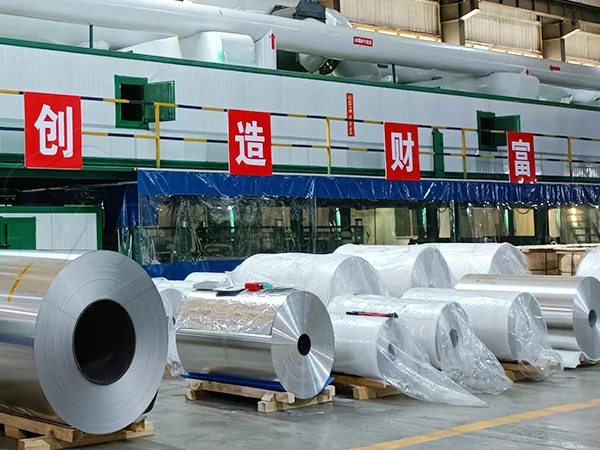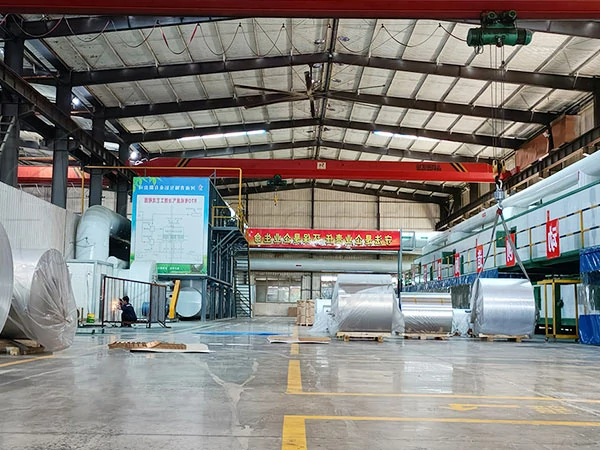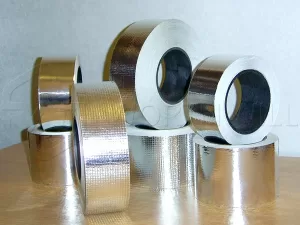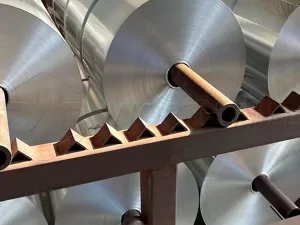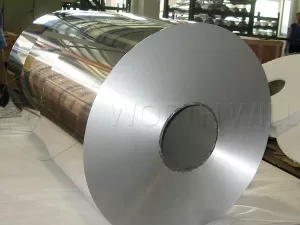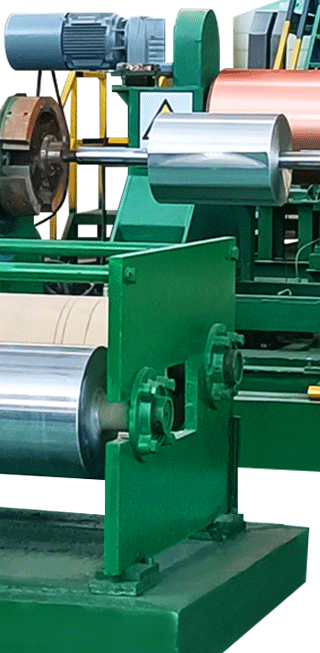Aluminum Foil Roll
- Home
- Aluminum Foil Roll
Aluminum Foil Roll has a clean, hygienic and shiny appearance. It can be made into integrated packaging materials with many other packaging materials, and the printing effect on the surface of aluminum foil is better than other materials.
1. The surface of aluminum foil is particularly clean and hygienic, and no bacteria or microorganisms can grow on its surface.
2. Aluminum foil is a non-toxic packaging material, which can be in direct contact with food without any danger to human health.
3. Aluminum foil is a tasteless and odorless packaging material, which will not cause any peculiar smell to the packaged food.
4. No matter at high temperature or low temperature, the aluminum foil will not have the phenomenon of grease penetration.
5. Aluminum foil is an opaque packaging material, so it’s a good packaging material for products exposed to sunlight, such as margarine.
6. Aluminum foil has good plasticity, so we can use it to pack products of various shapes.
7. Aluminum foil has high hardness and high tensile strength. But its tear strength is small, so it’s easy to tear.
8. The aluminum foil has the coating with a heat-resistant material, such as PE.
Applications
Due to its excellent properties, aluminum foil has wide use in food, beverages, cigarettes, medicines, photographic substrates, household daily necessities, etc. It’s usually used as its packaging material, electrolytic capacitor material, thermal insulation material for buildings, vehicles, ships, houses, etc.
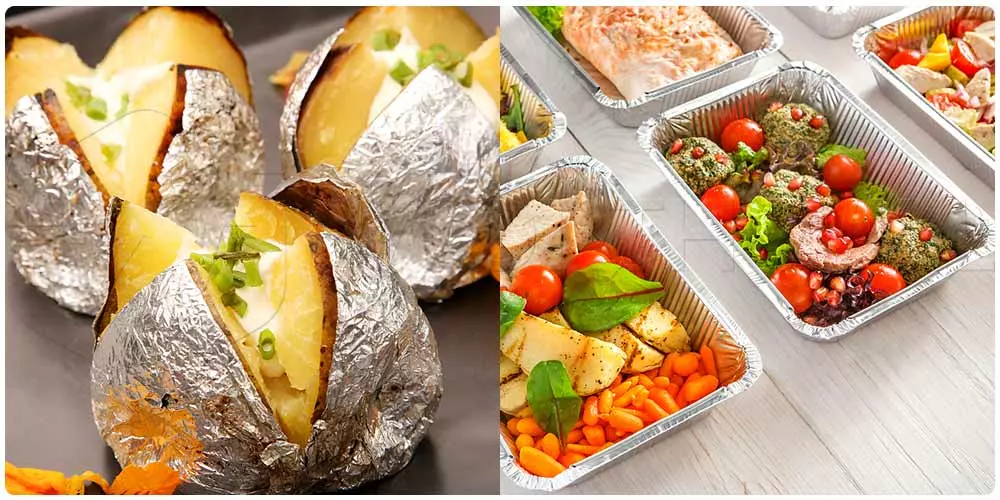
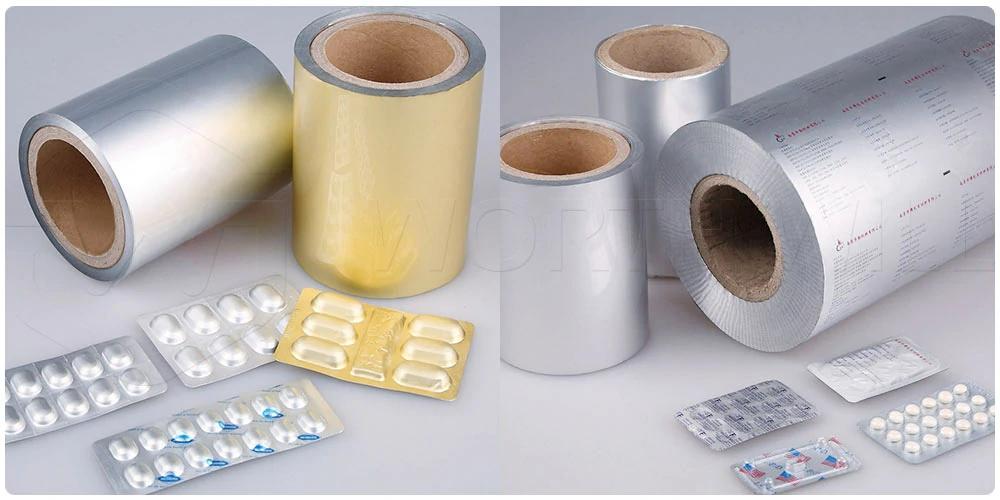
Aluminum Foil Classification
-
Thickness
Aluminum foil can be divided into thick foil, single zero foil and double zero foil according to the difference in thickness.
① Thick foil (“heavy gauge foil”): foil with a thickness of 0.1 to 0.2 mm.
② Single zero foil (“medium gauge foil”): Foil with a thickness of 0.01mm and less than 0.1mm.
③ Double zero foil (“light gauge foil”): The so-called double zero foil is a foil with two zeros after the decimal point when its thickness is measured in mm.
-
Processing Status
① Plain foil: aluminum foil without any other processing after rolling, also known as light foil.
② Embossed foil: Aluminum foil with various patterns on the surface.
③ Composite foil: a composite aluminum foil formed by laminating aluminum foil, paper, plastic film, and cardboard together.
④ Printed aluminum foil: aluminum foil that forms various patterns, patterns, characters or pictures on the surface by printing, which can be one color, up to 12 colors.
Welcome to Our Factory
